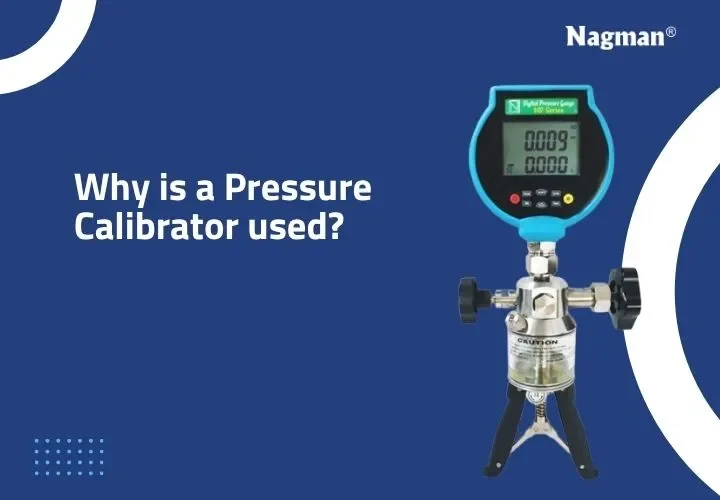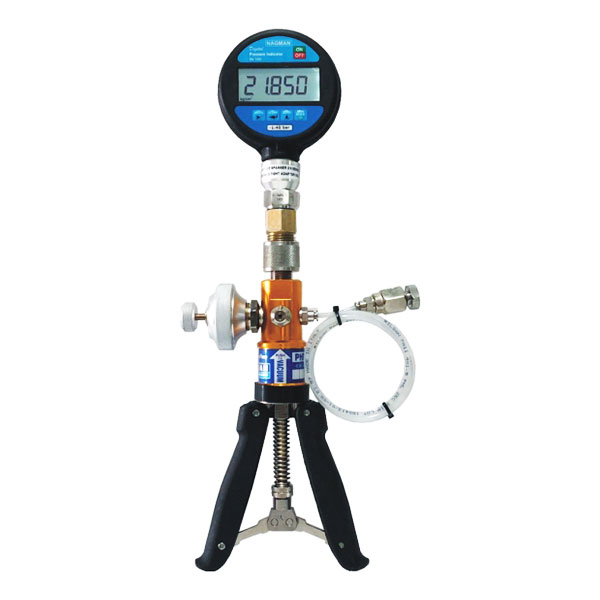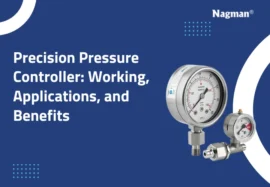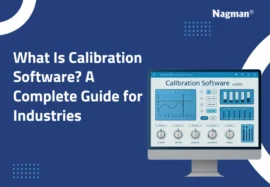Pressure sensors are used in various industries to measure the pressure exerted on a surface. The pressure sensor measures the pressure and converts it into an output signal for quantitative analysis. Sensors of any kind are very important in industry because a lot of the process depends on an accurate reading of factors such as temperature, pressure, humidity, etc. Since the sensors are the devices that output the readings, it is very important to ensure that they work accurately and without any errors. This is where calibration comes into play. Pressure calibration is all about calibrating pressure devices and pressure sensors in an industry to ensure that they are working properly.
Pressure measurement devices
Pressure measuring devices are also called pressure transducers and pressure transmitters, but the most commonly used name is ‘pressure sensors’, as an umbrella term. The only way to differentiate between these terms would be with the electrical output signal that measures the pressure.
Pressure exerted on a surface can be of three types: hydraulic, pneumatic and vacuum. If we get into the technicalities of pressure terminology, there are multiple other terms involved, like gauge pressure, absolute pressure, differential pressure, etc. Pressure sensors are used to measure this pressure and display it in terms of quantitative numbers for easier documentation and management. There are various types of pressure sensors involved in every industry. However, when it comes to pressure calibration devices, you can find one device that can meet almost all of your needs. At Nagman, we have a range of pressure calibrators that can fit your calibration needs.
Pressure calibration in Primary calibration labs
Primary calibration labs perform high-precision calibrations for top-level industries like the military, research facilities, corporations, etc. They work in close coordination with the National Metrology Institute, which is available in every country. Pressure calibration in Primary calibration labs usually uses a fundamental pressure standard that is finalised by the national metrology institute. Primary calibration labs take up pressure devices in low volume since they perform highly precise calibration of the device. Nagman provides pressure calibration devices that are fit to perform such high-level calibration tasks, too.
Pressure calibration at Instrumentation shops
Instrumentation shops also perform precise calibrations, but in high volumes. Usually, there is one instrumentation shop in every industry where the calibration process of all measuring devices takes place. Pressure calibrators are used in such instrumentation shops for calibrating pressure sensors that are used in the industry. Instrumentation shops or secondary labs are equipped for the regular calibration of measuring devices, even on an everyday basis. They make the calibration process very efficient without affecting the production or manufacturing process in the industry. These secondary labs use a range of pressure calibration devices, from fixed to portable. They also use pressure calibrators that are equipped to provide precise calibration in bulk.
Pressure calibration on the field/ on-site
Usually, when there is a need for pressure calibration in an industry, the pressure device that needs to be tested is transferred to primary or secondary calibration labs. However, if the device under test is not portable or it cannot be moved from its process, then portable pressure calibration devices come in handy. They are time-saving, cost-effective, easy and efficient calibration devices that can be used for the pressure sensor that needs to be calibrated. Nagman’s range of deadweight testers is one of the best portable pressure calibration devices on the market. They are tough, industrial-grade devices that can be easily transported from one place to another based on the requirement.
Choosing the right pressure calibrator
A pressure calibrator can either generate pressure or measure the pressure exerted on a surface. However, the most common use of a pressure calibrator is to reset the device under test to avoid measurement errors. That said, the first important factor to consider while choosing a pressure calibration device is the level of accuracy you are looking for. Depending on the range of measurement of the device under test, the acceptable accuracy level is usually + or – 1 psi. Setting an acceptable range of accuracy level can save you a lot of time and money while choosing the pressure calibration device.
The next factor to consider is the pressure medium, as the pressure is exerted by liquid or gas. There are a few special calibration devices that are equipped to calibrate both hydraulic pressure devices and pneumatic pressure devices. However, if you are looking for a cost-effective solution, it would be to choose a calibration device that meets your requirements alone.
The third factor to consider while choosing a pressure calibration device is the portability, or basically, if there is a requirement for a portable calibration device. If your company can make do with a basic benchtop model for your calibration lab or the instrumentation shop, then you can choose from a range of high-quality benchtop pressure calibrators. However, if the calibration needs to be performed in the field or on-site, then you can browse through Nagman’s industrial-grade portable pressure calibrators.
If you are looking for some high-quality and high-precision pressure calibration devices, you are at the right place because Nagman hosts the best range of pressure calibration devices on the market.








